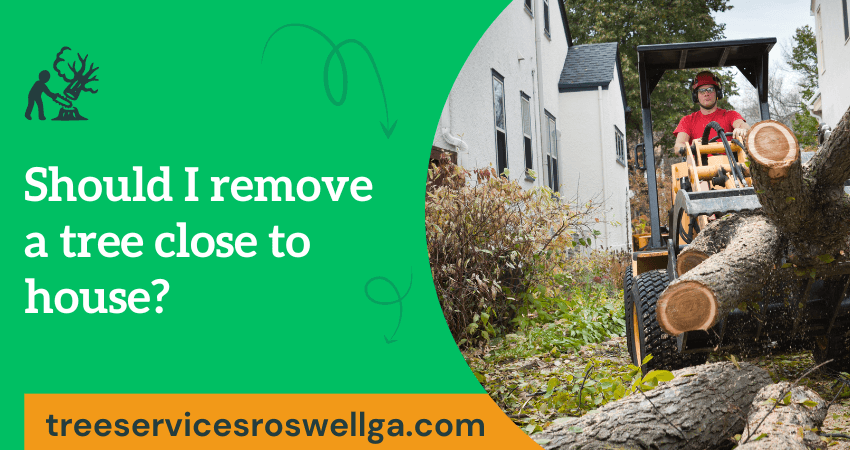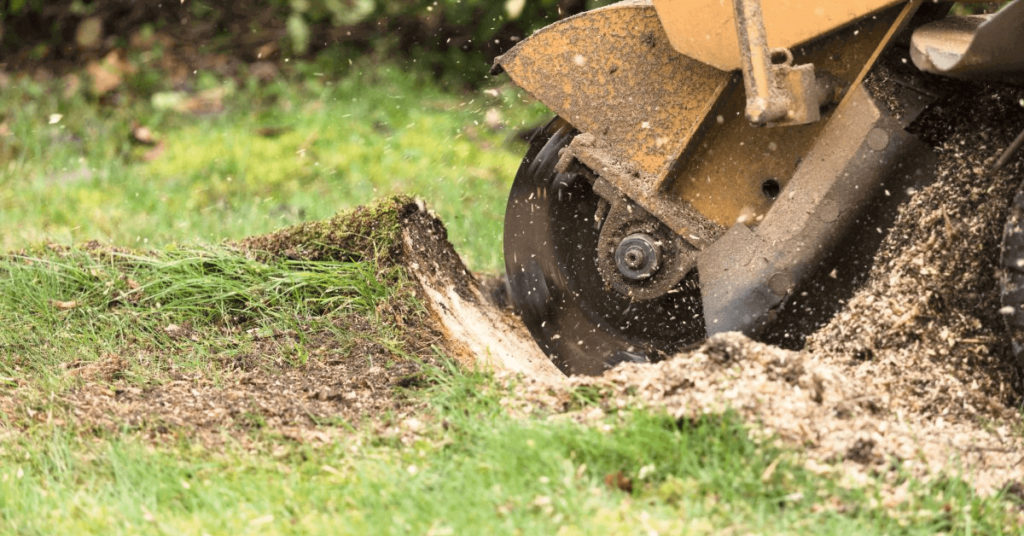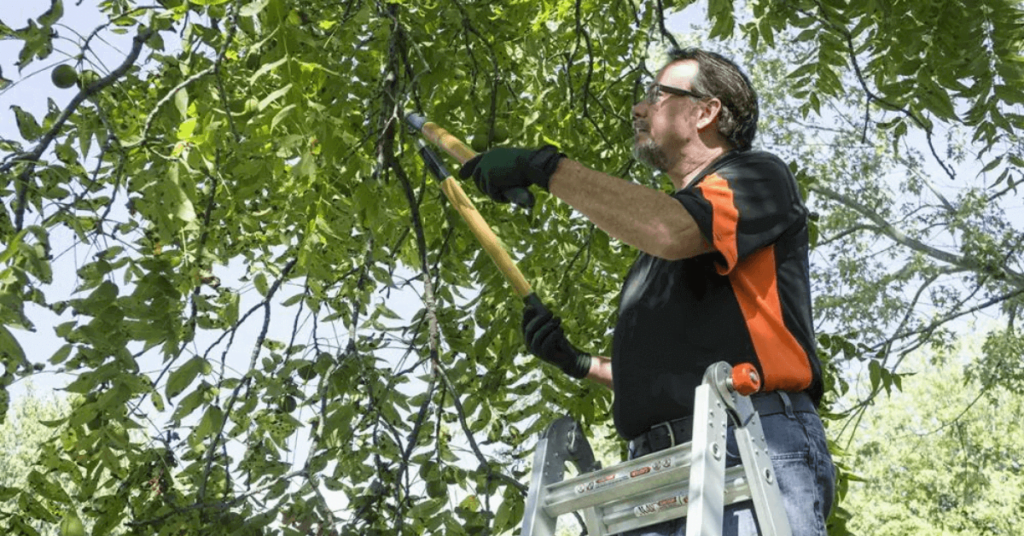Trees are a beautiful and valuable addition to any property, providing shade, beauty and a sense of serenity. However, when a tree is planted too close to a house, it can pose a potential risk to the safety and integrity of the structure.
This is a common dilemma faced by many homeowners who may wonder whether they should remove a tree that is growing too close to their house.
In this blog post, we will explore the factors you should consider when deciding whether or not to remove a tree close to your house. We will also explore the pros and cons of removing a tree that is growing too close to a house. So read on for more!
Factors to consider when deciding whether to remove a tree close to a house.
When deciding whether to remove a tree close to a house, there are several factors that should be taken into consideration.
- The age and health of the tree: If the tree is old and weak, it may pose a risk to the house should it fall. A diseased or infested tree can also present a hazard because of its weakened state.
- The size of the tree: Larger trees require more energy from their root systems to stay upright, making them more prone to falling over in windy conditions.
- Tree location: If the tree is too close to the house’s foundation, then it could cause damage if its roots spread and compromise the integrity of the building.
- Distance from the house’s foundation: Generally, the tree should be located at least 10 feet away from the house’s foundation.
- Cost of removing a tree: Removal of a tree, especially a large one, can be costly. It’s important to weigh the cost of removal against any potential damage that could be caused by leaving it in place.
- Local regulations: Before removing a tree, it is important to check with local authorities to see if there are any restrictions or regulations regarding tree removal in the area.
- Tree species: Some trees, such as willows and elms, are known for having shallow root systems that can cause damage to foundations or underground pipes. Consider the tree’s species before deciding whether or not to remove it.
- Potential for damage: If the tree’s roots have already caused significant damage to the home’s foundation or landscaping, it may be necessary to remove them to prevent further damage.
Risks of Leaving a Tree Close to a House.
Leaving a tree close to a house can pose several risks. Here are some of the potential risks of leaving a tree close to a house:
- Property damage: If the tree is old, diseased or damaged, it may be more likely to fall and cause damage to the house, vehicles or other structures on the property.
- Injury or fatality: Falling trees or branches can cause serious injuries or even fatalities to people or pets who may be near the tree at the time of the fall.
- Foundation damage: The roots of the tree can grow and extend under the foundation of the house, causing it to become unstable or even crack.
- Pest infestation: Trees that are in close proximity to a house can attract pests such as termites, ants or rodents, which can cause damage to the property.
- Roof damage: Overhanging branches can damage the roof of the house, especially during storms or high winds.
- Blocked gutters and drains: Falling leaves, branches and debris from the tree can clog gutters and drains, causing water damage to the house.
- Reduced sunlight and ventilation: Trees that are too close to the house can block sunlight and reduce ventilation, which can lead to dampness, mold and other moisture-related problems in the house.
Overall, leaving a tree too close to a house can be a significant risk to the property and the people who live in or visit the house. It is important to assess the health and proximity of the tree and to take action to remove it or minimize the risk if necessary.
Benefits of removing a tree close to a house.
There are several benefits to removing a tree that is growing too close to a house. Here are some of them:
- Avoiding Damage to the House: Trees that are too close to a house can cause damage to the roof, walls and foundation. The roots of a tree can grow into the foundation, causing it to crack, while the branches can scrape against the roof and walls, leading to damage.
- Preventing Pest Infestation: Trees that are too close to a house can attract pests like termites, ants and rodents. These pests can enter the house through cracks and crevices in the walls and foundation, leading to infestation.
- Improving Safety: Trees that are too close to a house can pose a safety risk during storms or high winds. A falling branch or tree can cause significant damage to the house or even injure people.
- Enhancing Curb Appeal: Removing a tree that is too close to a house can improve the appearance of the property. It can also increase the amount of natural light that enters the house, making it brighter and more inviting.
Overall, removing a tree that is too close to a house can help to protect the property and its occupants.
Drawbacks of removing a tree close to a house.
There are several drawbacks to removing a tree that is located close to a house. Some of the most significant ones include:
- Damage to the house: When a tree is removed, the roots that were holding the soil in place are also removed. This can cause the ground to shift and settle, potentially leading to damage to the foundation, walls or other parts of the house.
- Loss of shade and privacy: Trees provide shade and privacy, which can be especially important for homeowners who live in hot, sunny areas or near busy roads. Removing a tree can mean losing these benefits, which may require the installation of alternative measures such as awnings or blinds.
- Reduced property value: Trees can add significant value to a property, both aesthetically and functionally. Removing a tree can decrease the overall value of a property and make it less attractive to potential buyers.
- Environmental impact: Trees play an important role in the environment, providing oxygen, absorbing carbon dioxide and providing habitats for wildlife. Removing a tree can have a negative impact on the local ecosystem and disrupt the balance of the environment.
- Cost: Tree removal can be expensive, especially if the tree is large or difficult to access. Homeowners may also need to pay for the removal of the tree stump and any damage that may have been caused to the house or surrounding area during the removal process.
- Emotional attachment: Trees can hold emotional value for homeowners, especially if they have been on the property for a long time or have sentimental significance. Removing a tree can be a difficult decision for some homeowners and may cause emotional distress.
FAQs
What trees should not be planted close to a house?
Generally, it is best to avoid planting the following trees close to home:
- Willow Trees: These trees have extensive roots that can damage foundations and disrupt plumbing.
- Eucalyptus Trees: The shallow root system of these trees makes them prone to toppling over in strong winds. They are also very messy with their falling leaves, flowers and seed pods.
- Silver Maple Trees: Like willow trees, these have extensive root systems that can damage foundations and disrupt plumbing.
- Box Elder Trees: These are fast-growing trees with brittle branches that can easily break in storms.
- Ash Trees: These are prone to various forms of the disease, which can spread to other plants and trees in the vicinity.
- Fruit Trees: Although these trees provide a great source of food, their roots tend to be invasive and troublesome.
Which plants can be planted close to the house?
When it comes to choosing plants for close proximity to the house, there are several options. Some of the most popular choices include ornamental grasses and shrubs such as boxwood, holly, azaleas and rhododendrons. Flowering perennials such as hosta, astilbe and daylilies can also be planted close to the house. Shrubs such as lilac and boxwood can also add a sense of privacy and beauty.
How can I tell if a tree is dead or dying?
There are a few signs that a tree may be dead or dying, including a lack of leaves or leaf buds in the spring, brittle or broken branches and cracks in the trunk or bark. If you are unsure whether a tree on your property is dead or dying, it’s best to consult a professional arborist.
Can I remove a tree close to my house myself?
It’s not recommended to remove a tree close to your house yourself, as this can be a dangerous and complex task. Instead, it’s best to hire a professional tree removal service with the proper tools and experience to safely remove the tree.
Final Words:
The decision to remove a tree close to a house should be carefully considered, taking into account various factors such as the tree’s health, size, location and potential risks. While removing a tree can help mitigate potential damage to a house and ensure the safety of its occupants, it may also have negative impacts on the environment, aesthetic value and property value.
Ultimately, the decision should be based on a thorough assessment of the risks and benefits and may require consultation with a professional arborist or tree removal company.



